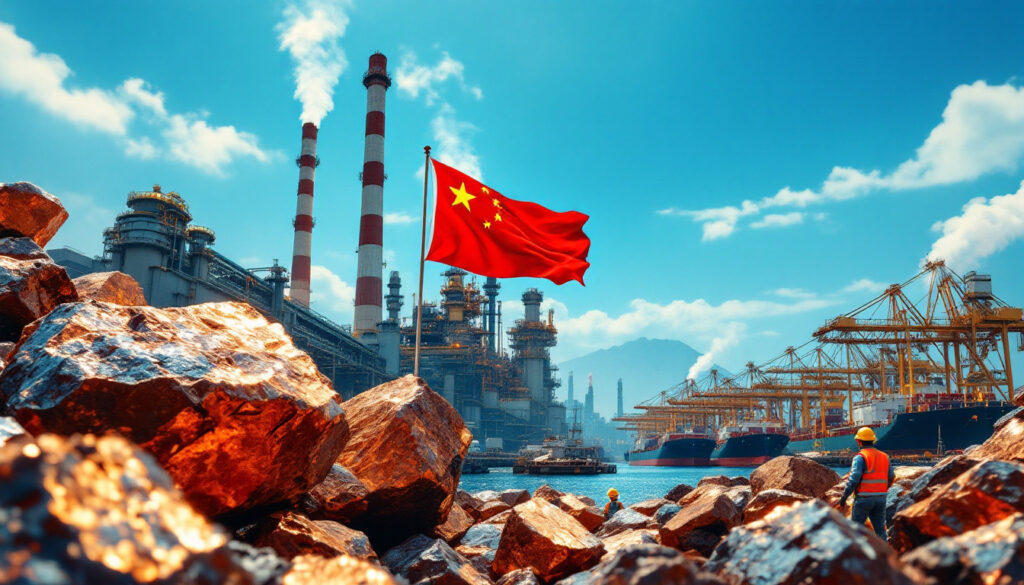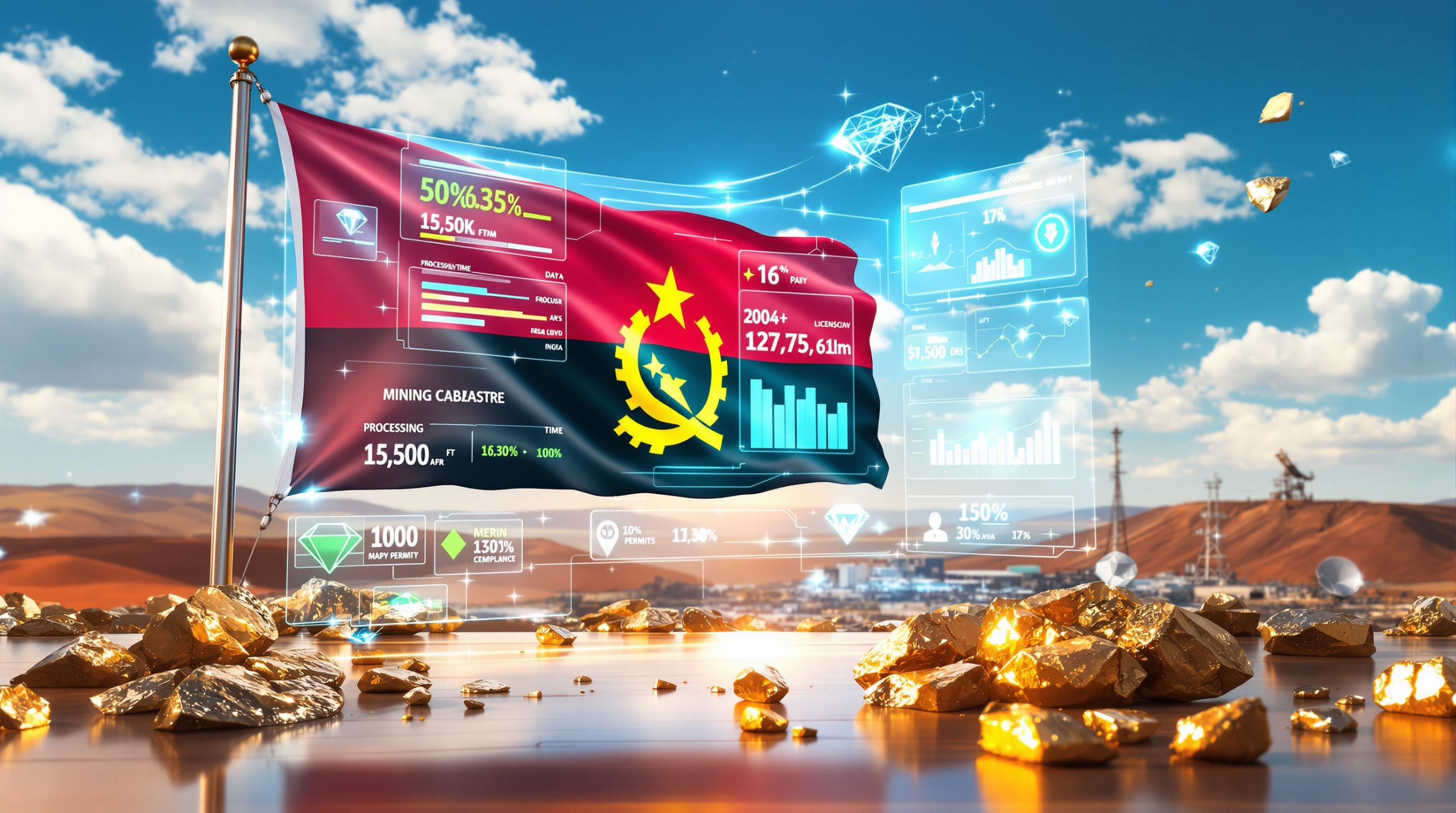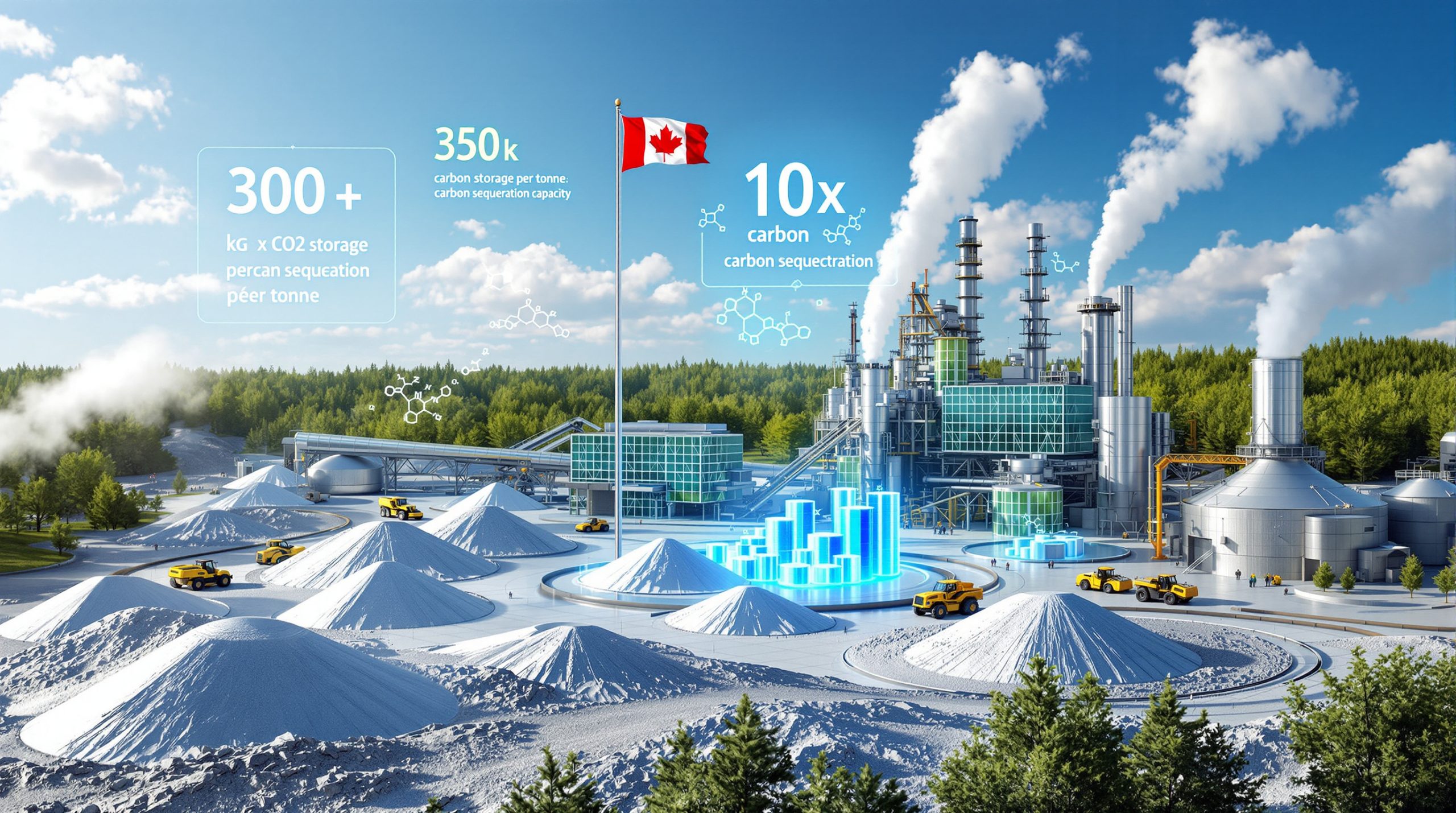China's Record Copper Ore Imports: Relief Amid Global Shortage
China's copper concentrate imports reached an unprecedented level of nearly 3 million tons in April 2025, marking a historic high that promises to ease domestic market pressures. This surge represents a 12% year-over-year increase and comes at a critical time when global smelters are grappling with feedstock shortages and negative treatment charges.
The record imports arrive amid what industry analysts call "a perfect storm" in the copper processing industry, with treatment charges remaining in negative territory for six consecutive months—an unprecedented situation in modern copper market history.
What's Driving China's Record-Breaking Copper Concentrate Imports?
According to data from Bloomberg and confirmed by MINING.com reporting, Chinese copper concentrate imports reached 2.98 million tons in April 2025. This remarkable volume reflects not just opportunistic buying but strategic positioning by Chinese smelters in a highly competitive global market.
"Chinese smelters are better prepared this year compared to their international counterparts," explains Li Chengbin, senior analyst at Mysteel Global. "They've been helped by additional ore from PT Freeport Indonesia after the mining giant resumed exports in March following a two-month moratorium."
This strategic advantage stems from several interconnected factors that have allowed Chinese processors to outmaneuver global competitors in securing feedstock.
Key Import Statistics and Market Impact
- April 2025: 2.98 million tons of copper concentrate imported (highest monthly volume ever recorded)
- Year-to-date growth: 9.3% increase compared to the same period in 2024
- Current spot treatment charges: -$57.50 per ton (as of May 2025)
- Previous treatment charges: -$52.80 per ton (end of April 2025)
- Treatment charges have been negative since December 2024 (6 consecutive months)
The negative treatment charges represent a remarkable market inversion—smelters are effectively paying miners $57.50 per ton for the privilege of processing their concentrate rather than charging a fee for this service.
Strategic Factors Behind the Import Surge
Chinese smelters have secured this advantage through several strategic approaches:
- Long-term contract coverage: Chinese processors now secure over 60% of their imports through long-term contracts, compared to the industry standard of 40-50%
- Strategic relationships: Renewed exports from PT Freeport Indonesia's Grasberg mine (the world's second-largest copper mine) prioritized Chinese buyers
- Market responsiveness: Quick procurement action following Glencore's announcement of its Pasar smelter closure in the Philippines, which redirected 240,000 tons of annual concentrate supply
- Government coordination: State-backed enterprises coordinating procurement strategies to minimize competitive bidding against each other
Environmental monitoring organization CopperWatch notes that this increased shipment volume has raised concerns about shipping emissions, estimating a 7% increase in carbon emissions from concentrate transport compared to 2024 levels.
How Are Global Copper Treatment Charges Affecting the Market?
The unprecedented collapse in treatment charges reflects a fundamental imbalance in the global copper supply forecast that has created unique challenges and opportunities across the copper value chain. For the first time in modern copper market history, treatment charges have remained negative for six consecutive months.
"We're witnessing nothing short of a paradigm shift in how copper concentrate is valued and processed globally," notes the International Copper Study Group's quarterly report. "This sustained inversion of the traditional pricing model suggests structural changes rather than temporary market disruption."
Understanding Negative Treatment Charges
Treatment and refining charges (TC/RCs) represent fees that miners traditionally pay smelters to process their copper concentrate into refined metal. However, the current market reality shows:
- Smelters paying miners to process ore rather than collecting fees
- Operating margins for many smelters estimated between -$15 to -$25 per ton
- Japanese smelters reducing output by approximately 15% in Q1 2025
- European plants implementing rotating closures to minimize losses
- Chinese processors continuing operation despite margin compression
This situation has effectively reversed the traditional power dynamic between miners and processors, creating severe profitability challenges for smelters worldwide.
Factors Driving Treatment Charge Collapse
Several interconnected factors have contributed to this unprecedented market condition:
- Capacity mismatch: Rapid expansion of global smelting capacity (up 18% since 2020) without corresponding mine supply growth (up only 7% in the same period)
- Production constraints: Environmental regulations, water accessibility issues, and declining ore grades limiting mine output growth
- Geographic concentration: Increasing concentration of processing facilities in China (now accounting for 58% of global seaborne concentrate trade)
- Energy economics: Variable energy costs creating competitive advantages for regions with lower electricity prices
- Geopolitical factors: Rising trade tensions redirecting traditional supply flows
The hydrometallurgical process innovations being tested in Chinese pilot plants suggest potential for 12% energy reduction in copper processing, which could eventually help offset some margin pressure if widely adopted.
Why Has Chinese Refined Copper Production Reached All-Time Highs?
Despite industry pledges to curtail production amid challenging market conditions, Chinese smelters have maintained and even increased output levels, reaching record production volumes of approximately 1.12 million tons per month in Q1 2025.
This production persistence comes despite failed industry self-regulation attempts to rescue profitability through coordinated output reduction. The contradiction between economic logic and actual production behavior reflects deeper strategic considerations by Chinese processors.
Production Trends and Market Dynamics
- Record-high refined copper output despite margin challenges
- National smelter utilization rates averaging 92% (compared to global average of 78%)
- Continued capacity expansion with six new smelters under construction
- Strategic stockpiling estimated at 400,000 tons added to reserves in 2025
"The economic fundamentals would typically dictate production cuts," explains a Beijing-based metals analyst, "but the strategic importance of maintaining market position and operational continuity has overridden short-term profit considerations."
This continuation of high production volumes despite negative treatment charges suggests that Chinese smelters are prioritizing market share and operational continuity over short-term profitability—a strategy that smaller international competitors cannot sustain.
Domestic Demand Resilience
Underpinning this production growth is what Bloomberg analysts describe as "remarkably resilient" copper demand despite broader economic slowdown:
- Overall domestic demand growth: 3.2% year-over-year despite 4.7% GDP slowdown
- Infrastructure development projects from State Grid Corp showing a 14% increase in power cable orders
- Electric vehicle sector now consuming 8% of total copper demand (up from 5% in 2023)
- Manufacturing sectors continuing to require copper inputs for export-oriented products
- Strategic stockpiling amid global supply uncertainties
The provincial production breakdown shows uneven distribution, with Jiangxi and Shandong provinces accounting for nearly 45% of national output, according to internal industry estimates.
How Is Global Competition for Copper Resources Intensifying?
The copper market is experiencing heightened competition as geopolitical factors reshape traditional supply chains and procurement strategies. This intensification is evident in accelerating trade flows and strategic positioning by major consumers.
US Market Dynamics and Tariff Concerns
The prospect of potential trade policy changes under a new administration has triggered significant shifts in US copper investment insight strategies:
- 18% quarter-over-quarter growth in US imports during Q1 2025
- Codelco (Chile's state copper company) redirecting approximately 200,000 tons from European customers to US buyers
- Copper premiums in US markets reaching $190 per ton (76% higher than Asian markets)
- Strategic stockpiling by manufacturers with exposure to copper-intensive products
As MINING.com reporting indicates, "US buyers are drawing more metal ahead of tariffs threatened by the Trump administration," which has proposed a 15% tariff on refined copper imports.
Supply Chain Restructuring
The global copper supply chain is undergoing significant restructuring in response to these competitive pressures:
- Major mines resuming production after temporary halts, with PT Freeport Indonesia's export resumption in March 2025 after a two-month pause
- Glencore's Philippine Pasar smelter closure redistributing concentrate supplies previously committed to Asian markets
- Indian smelters building unprecedented 3-month inventory reserves
- Shipping routes shifting with increasing preference for Panama Canal transit over longer Suez Canal routes due to security concerns
"We're witnessing a fundamental reorganization of copper trade flows that will have lasting impacts even if the immediate crisis in treatment charges normalizes," notes a Singapore-based commodities trader. "Once these new relationships and routes are established, they tend to persist."
The Defense Logistics Agency (DLA) has not yet announced any strategic reserve releases despite industry speculation about potential intervention.
What Are the Long-Term Implications for Global Copper Markets?
The current situation represents more than a temporary market disruption, potentially signaling structural changes in how copper resources are allocated and processed globally. The International Copper Study Group projects a global capacity gap of 4.7 million tons by 2026 if current trends continue.
Strategic Positioning of Chinese Smelters
Chinese processors have demonstrated remarkable strategic foresight through:
- Enhanced preparation through long-term contract strategies covering over 60% of import needs
- $2.1 billion in smelter acquisitions year-to-date 2025, consolidating market position
- Maintaining production despite margin pressures to preserve market share
- Technological innovation in processing techniques, reducing energy requirements by up to 12% in pilot projects
This positioning suggests continued Chinese dominance in global copper processing, with potential for further market consolidation as smaller international smelters struggle with negative margins.
Global Supply Chain Resilience
The copper industry is developing various adaptations to persistent ore shortages:
- Evolution of pricing mechanisms, with increasing adoption of variable TC/RC formulas linked to market conditions
- Increased vertical integration attempts, with miners acquiring 23 processing facilities since 2023
- Development of alternative processing technologies, including advancements in bacterial leaching for low-grade ores
- Rising importance of recycled copper, though exact improvement rates remain difficult to quantify
The renewable energy sector's copper requirements continue to grow, with recent projections suggesting that solar and wind installations alone will require an additional 1.2 million tons annually by 2030.
How Are Copper Producers Responding to Market Challenges?
Mining companies and smelter operators are implementing various strategies to navigate the complex market environment characterized by high demand and processing bottlenecks.
Mining Company Strategies
Copper miners have responded to the unusual market dynamics with several approaches:
- Production optimization: Major operations like PT Freeport Indonesia increasing output while carefully managing concentrate quality to maximize returns
- Project acceleration: Expedited development timelines for new copper projects, with 14 major expansions announced since January 2025
- Contract restructuring: Renegotiation of supply agreements with processors to capture more value in the negative TC environment
- Inventory management: Strategic release of stockpiled concentrate to capitalize on favorable pricing conditions
"The negative treatment charge environment has shifted the power dynamics significantly in favor of miners," explains a London-based mining analyst. "The producers who can deliver consistent quality concentrate on reliable schedules are commanding even greater premiums."
Smelter Adaptation Approaches
Smelters facing economic pressure from negative treatment charges are pursuing several adaptation strategies:
- Operational efficiency: Technical improvements to reduce energy consumption and increase metal recovery rates
- Supply security: Aggressive pursuit of long-term supply contracts, sometimes at the expense of pricing terms
- Selective curtailment: Strategic production reductions at highest-cost facilities while maintaining core operations
- Consolidation: Industry consolidation through mergers and acquisitions, with $2.1 billion in transactions year-to-date
These adaptations reflect the industry's attempt to rebalance the fundamental mismatch between processing capacity and mine supply that has driven treatment charges into negative territory.
FAQ: China's Copper Market and Global Supply Dynamics
Why are copper treatment charges negative, and what does this mean?
Treatment charges have turned negative because smelters are competing intensely for limited copper concentrate supplies. This unprecedented situation means smelters are effectively paying miners for the privilege of processing their ore, rather than charging a fee for this service.
The negative charges (currently -$57.50 per ton) reflect the severe imbalance between expanding processing capacity (up 18% globally since 2020) and limited mine output (up only 7% in the same period). This inversion has persisted for six consecutive months—the longest such period in modern copper market history.
How does China's record copper ore importing affect global markets?
China's ability to secure record volumes of copper concentrate (2.98 million tons in April 2025) impacts global markets in several ways:
- Provides relief from feedstock shortages for the world's largest copper processing industry
- Intensifies the shortage for other global processors, particularly in Japan and Europe
- Demonstrates China's continued dominance in metals processing through strategic sourcing
- Supports continued high production of refined copper despite challenging economic conditions
- Creates environmental concerns due to increased shipping emissions (estimated 7% increase year-over-year)
What role does PT Freeport Indonesia play in the global copper supply?
PT Freeport Indonesia operates the Grasberg mine—the world's second-largest copper mine—and had temporarily halted exports for two months before resuming in March 2025. This resumption has been crucial in helping Chinese smelters secure additional concentrate volumes.
The mine's production significantly impacts global copper concentrate availability and pricing, with its temporary export halt contributing to the initial decline in treatment charges in late 2024. The company's decision to prioritize Chinese buyers upon resuming exports reflects the strategic importance of maintaining relationships with the world's largest copper consumer.
How might potential US tariffs affect global copper flows?
Potential 15% tariffs under a new administration have already begun reshaping trade patterns, with US buyers accelerating purchases to build inventory before possible import restrictions. This shift is evidenced by:
- 18% quarter-over-quarter growth in US imports during Q1 2025
- Codelco redirecting approximately 200,000 tons from European customers to US buyers
- Copper premiums in US markets reaching $190 per ton (76% higher than Asian markets)
- Strategic stockpiling by manufacturers with exposure to copper-intensive products
These changes could lead to permanent alterations in global supply chains if tariffs are implemented, potentially creating new regional price differentials and trade patterns.
Comparative Analysis: Global Copper Processing Capacity vs. Mine Supply
| Region | Processing Capacity (Million Tons) | Domestic Mine Supply (Million Tons) | Supply Gap | Key Supply Sources |
|---|---|---|---|---|
| China | 11.8 and expanding | 2.3 | 9.5 (largest deficit) | Chile, Peru, Indonesia, Australia |
| Europe | 3.7 (stable) | 1.2 (declining) | 2.5 | Chile, Peru, regional recycling |
| North America | 2.9 (potential expansion) | 2.1 | 0.8 | Domestic mines, Mexico, Chile |
| Japan | 1.8 (stable) | 0.1 | 1.7 | Chile, Indonesia, Australia |
| Other Asia | 3.2 (rapidly expanding) | 1.4 | 1.8 | Global imports, regional mines |
Key Market Insight: The widening gap between processing capacity (up 18% globally since 2020) and mine supply (up only 7% in the same period) is the fundamental driver of negative treatment charges and intensifying competition for copper concentrate.
Future Outlook: Copper Market Dynamics Through 2025-2026
The current market disruption shows no immediate signs of resolution, with several factors likely to influence developments over the coming 12-24 months:
- Mine Supply Growth: Several major copper projects scheduled to come online could potentially add 1.2 million tons of annual capacity by late 2026
- Processing Capacity Rationalization: Continued negative treatment charges may force closure of 1.5-2.0 million tons of higher-cost smelting operations globally
- Geopolitical Factors: Proposed 15% US tariffs could significantly reshape global copper flows and create regional price differentials
- Chinese Economic Performance: Infrastructure stimulus programs and strategic stockpiling will likely maintain Chinese demand despite broader economic slowdown
- Technological Developments: Advancements in hydrometallurgical processing could improve recovery rates by 3-5% while reducing energy consumption by up to 12%
The surging copper demand and restricted supply dynamics have led many analysts to issue bullish copper price predictions. The fundamental tension between limited mine supply and expanding processing capacity seems likely to persist through at least mid-2026, maintaining pressure on treatment charges and challenging smelter profitability. For investors focused on the copper investment outlook, these imbalances may present both challenges and opportunities.
Disclaimer: The projections and forward-looking statements in this article are based on current market conditions and represent informed estimates rather than certainties. Market participants should use this information as just one input in their decision-making process and conduct additional research before making investment or strategic business decisions.
Want to Capitalise on the Next Major Copper Discovery?
Discovery Alert's proprietary Discovery IQ model instantly notifies investors about significant ASX mineral discoveries, transforming complex data into actionable copper investment opportunities before the broader market reacts. Explore why major mineral discoveries can lead to substantial returns by visiting our dedicated discoveries page and begin your 30-day free trial today.




